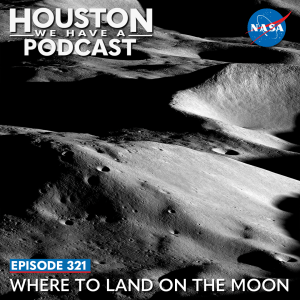
From Earth orbit to the Moon and Mars, explore the world of human spaceflight with NASA each week on the official podcast of the Johnson Space Center in Houston, Texas. Listen to in-depth conversations with the astronauts, scientists and engineers who make it possible.
On episode 321, NASA experts discuss the considerations when looking at landing locations for future human missions to the Moon’s surface. This episode was recorded on December 7, 2023.

Transcript
Host (Gary Jordan): Houston, we have a podcast! Welcome to the official podcast of the NASA Johnson Space Center, Episode 321, “Where to Land on the Moon.” I’m Gary Jordan, I’ll be your host today. On this podcast, we bring in the experts, scientists, engineers, and astronauts, all to let you know what’s going on in the world of human spaceflight and more. NASA is returning humans to the Moon in a sustainable way with Artemis missions. The work we do will set the course for a future of humans on the lunar surface, conducting science investigations, testing critical technologies, and catapulting our knowledge of deep space missions to prepare for human missions to Mars. Now, what may not seem so apparent is what landing on the Moon really means. Okay, so you’re going to land on the Moon, just go. But not surprisingly, it’s a lot more complicated than that for a variety of reasons. But one reason which we’ll discuss in this episode, and shouldn’t be too surprising because it’s the title of the episode, and you probably saw it when you started this episode, is where to land: location, location, location.
There are a number of factors to consider from the chances of successfully landing a spacecraft, to the sustainable nature of future operations, to the interesting science that you can conduct on the surface. For the science part in particular, this has become more apparent to me after having a number of conversations about Moon geology on this podcast. The Moon isn’t just one homogenous rock. Each location under consideration has an interesting story to tell. And of course, one major item here is when you start getting closer to the poles, the science gets very interesting with water ice in permanently shadowed regions. But of course, picking the right place to land can get quite complicated.
So we’re going to do what we do best on this podcast and bring in the right folks to talk about it. On today’s episode, we have Jake Bleacher, chief exploration scientist out of NASA’s Headquarters in Washington, and Tamra George, Artemis service planning lead here at the Johnson Space Center. Looking forward to Artemis missions, these folks can give us the baseline knowledge needed to understand just what has to be considered for picking the right places to land for future human missions to the Moon. Super cool, and I’m very excited for this conversation. So let’s get right into it with Jake Bleacher and Tamra George. Enjoy.
[Music]
Host: Jake and Tamra, thank you so much for coming on Houston We Have a Podcast today.
Jacob Bleacher: Hey, Gary, thanks for having us. This is a really exciting time in space exploration, and we are really looking forward to the opportunity to talk to everybody about it.
Tamra George: Yes, thank you so much for having us. I mean, the lunar surface stuff and all things Artemis are so excited to talk about. So thank you.
Host: Honestly, I’m really looking forward to it. I’m excited for this topic mostly because I’m so curious. I have an idea of what lunar surface operations are going to be for Artemis, but you guys are just so into the planning and not just for the near term, but you guys are thinking really how this evolves. So I’m very much looking forward to this, but I think what’s exciting is I get to talk to both of you. Jake, with your role as more of the strategic mind, Tamra, implementing that strategy for missions going forward for Artemis. I wonder what your path was to get you to such incredible roles with an awesome responsibility. Jake, if you’ll start to give us an understanding, I think you have a science background, but really what led you to becoming the chief exploration scientist?
Jacob Bleacher: Yeah, that’s right. My background is science. I actually studied geology and I spent time at a NASA center studying volcanoes across the solar system. Part of that job was doing field work on volcanoes here on Earth. And so I’ve always had, I like to say one boot on the science side and one boot on the exploration side, because we ask many questions, what would the astronauts do when they get to the Moon or Mars or wherever we end up sending them? And so, coming from a position where I did a good bit of field work, put me in kind of a role where I could advise on that throughout my early career. Then I had an opportunity to come join NASA at Headquarters and start, you know, really digging into how do we apply and develop an architecture that can go do the types of science that our communities are asking to do. I joined just before we kind of got the direction to form Artemis. And so it’s been kind of a wild ride, just a great opportunity to represent science broadly as we think that architecture through.
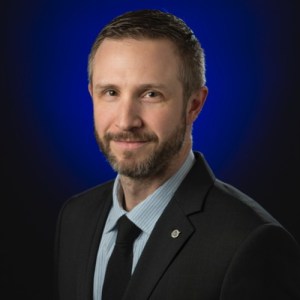
Host: Perfect. Yeah. And it’s going to be very interesting hearing your perspective, particularly on the science. You know, I think that’s one thing we stressed a lot on this podcast, but really hearing from you just what is that interesting science? So we’ll certainly get to that. Tamra, you’re the one that has to take all these fantastic ideas and then implement them. What led you to having such an amazing responsibility?
Tamra George: I’ve been excited to jump into this role, being able to grab a hold of a lot of the things I’ve learned throughout my career. And I try to talk to young folks a lot about how you can take different components and really bring them to together and continue to learn and improve. And it takes everybody, right? Not just one person knows everything. So I started with shuttle and space station robotics operations and flight design and flight control, and also switched to monitoring the levels of radiation the astronauts get, they are considered radiation workers, and we try to keep those as low as possible. But a good chunk of my career was also as a hardware manager with the EVA tools that we used on the shuttle and the space station, including what we call the SAFER, lovingly, the jet pack and bringing those tools to even when we had difficulties and operations on the space station and trying to fix equipment. So that led to deputy EVA chief engineer for a little bit and also included fun kicking off the initial geology tools designs and making sure that teams started getting funded so we could push forward to all of our commercial providers now helping with that as well. So that brought me then to where I am today, bringing all different pieces and different people together cause it’s going to take all of us and stakeholders to pull that whole surface mission planning together cause there’s a lot of components and a lot of expertise needed.
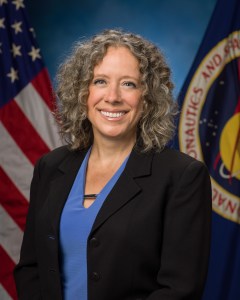
Host: Yeah, and I think especially with your background with spacewalks on the space station, that’s not an isolated thing by any means, right? You’re pulling together a lot of stakeholders to solve issues on the space station you’re presented with an issue, with an objective. And it’s your job to come up with a plan in order to solve that translates very nicely to the Moon. But just based on your experience having that, you know, aboard the International Space Station and microgravity, now thinking about the Moon component, what is maybe a little different between those two roles? Maybe adds a little bit more complexity or maybe seems apparent, but maybe is not?
Tamra George: Well, the loads are definitely different when it comes to the one-sixth gravity versus microgravity. And so making sure we can design spacesuits that support that. Also, you know, when you’re developing hardware, the difference in the loads there and then a topic that I know Jake is also very familiar with is dust. The lunar regolith, which a lot of folks lovingly call dust, it loves to attach and give us some technological challenges. So we look forward to working through that and making sure we’re not bringing all that inside a vehicle and that all the systems can tolerate that as well.
Host: Yeah. And especially, this is where you’re digging into that, looking at the specifics, “Okay, here’s an issue. How do we solve that in order to execute the broader strategy?” Why don’t we start with there. Going back to you, Jake, is getting a better sense of this broader strategy, right? We’re talking about returning humans to the Moon. We’re talking about the sustainable and evolving architecture of lunar surface operations. From a high-level strategy point, you know, we talk about this idea of Moon to Mars, and I think lunar surface operations for Artemis missions is part of that. Just high level when you talk about why we’re going to the Moon. Jake, you mentioned there’s so much interesting science on the Moon. You know, what is the high-level objectives when it comes to why we’re doing this?
Jacob Bleacher: Yeah, that’s great. And I like that you used the word why first, because there are a lot of questions you can ask yourself as you think about how to develop an architecture. And you already pointed out that one of our goals is to develop an approach that’s flexible. We want to be able to explore and we talk about our interest in building the blueprint for exploring the solar system, right? So the Moon and Mars are part of that. That’s where we’re starting. But it’s really about a blueprint for humankind to survive away from the Earth. How do we explore? And so we choose to start with that question. Why are we exploring? Well, the answer to that is because it is a benefit to humanity.
We tend to break that down into what we call our three pillars of exploration. And those are science, inspiration, and national posture. You brought up the science already. There’s so much that we can learn about our environment. I like to say that when we go away from the Earth, we’re going to learn about ourselves, really. We learn more about humanity and life and how it thrives. And that’s what we’re trying to understand. And the science is kind of our toolbox for doing that. But the other aspects that are important: inspiration. If you think about, for instance, Apollo. Apollo, that inspiration that was driven out of Apollo, it can’t be understated. How many scientists and engineers got into that field because they had that inspiration in front of them. That is a key aspect to what we do at NASA, trying to drive that inspiration for all humankind.
Then from the position of national posture, it’s like what we choose to do really helps influence globally, how we work together. You know, that posture, by us taking on these big tasks, enables us to really help build international relationships, global relationships, that really bring us all together in a positive way to go explore for humankind. So we kind of start with that. Those are our pillars for exploration. We start with the question, “why?” And then by asking that question to our international partners, to industry and academia, across NASA, and with our other federal agencies, we’ve been able to outline a series of objectives for Moon to Mars. That kind of sets the groundwork for us from which we can start to develop that architecture. We have kind of largely grouped those together in a few areas. Science, transportation and habitation. We have a number of objectives around those infrastructures. What do we plan to build as we go out into space and explore how do we operate? And then there are some common tenets that occur across all of those. So those are the basis from which we can then decide how to build that architecture, trying to remain flexible along the way. So that’s kind of the basics for the strategy that we’re putting into play right now.
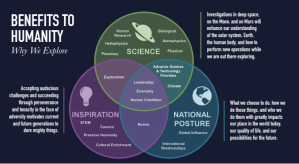
Host: Yeah. You’re really just looking very high-level. What is it exactly that we want to accomplish? And then what is it that we want to accomplish together? I think that’s an important part. You talk about international partners, there’s also commercial partners as well that are a part of the mix. It’s a wider objective and it’s shared as well. And so I think that really leads us into understanding this, you know, this shared approach, how we, together, are approaching going to the Moon and doing operations on the surface. We’ll really get into this, but, you know, I think a lot of our conversations that we have is really looking forward to that first step, right? We’re looking forward to Artemis launching humans around the Moon, you know, Artemis II, and then finally returning to the lunar surface for the first time.
All these firsts are really, really important and really magical in a way. But I think what’s interesting about this architecture is, and this is I think part of your task, is how is this sustained? You know, how do we get to not just returning to the Moon, but then how do we take that next step to just making sure we are continuing to have realistic and significant progress every time we go? And so how do you explain that sort of challenge, not just taking the steps and understanding the objectives of returning, but really understanding those long-term goals and how that evolves?
Jacob Bleacher: Yeah, those are great questions. And in part, that’s why we choose to ask the first question of “why?” You can develop a different architecture based on which questions you ask first. You know, we’ve seen architectures in the past, Apollo’s a great example where the first question was “when? ”and if you set your question as “when,” that’s a very focused goal of trying to accomplish a certain technical capability in a certain time period. But timeline-based goals have an end, right? You reach that. And what we’re asking are much broader questions about blueprints, about humanity, about surviving.
You brought up the word sustainability. Those are more open-ended. So as we develop a flexible architecture, we continue to look forward and move forward. And so the way we’ve done that is we’ve basically set up a series of we call segments. So instead of thinking about just trying to complete a certain task, we’re thinking about the architecture as growth and capabilities. So we start out with what we call our human lunar returns segment that’s really focusing on those initial capabilities, the systems, the types of operations that we’ll need to be able to do to go visit a place on the Moon that we’ve never been before, the South polar region. So we’ve got to get there, show we can land, get out, do some tasks, and return ourselves safely so that we can then build off that.
Okay, so the next steps after that, we’ll build off of our initial successes when we move into two segments we call “foundational exploration” and “sustained lunar evolution.” And so what really marks this is an ability to deploy and place infrastructure capabilities that we can reuse when we go back to the Moon. So we’re trying to get away from a series of single independent landing locations and work towards something where we can build off of what we’ve already done. So we’ll see an expansion of our capabilities and systems and developing new operations to support the complex orbital and surface missions that we want to conduct. So we’ll get there, and then we’ll start to build from there. We’ll have new capabilities, maybe mobility or an ability to go into different environments than we did initially. And eventually, that leads to what we call sustained lunar evolution. So capabilities, systems, operations, again, that can support more regional, maybe even global exploration and doing the science at more than just one spot where we land. Initially, as we do that, we move through these lunar segments we’ll ever be trying to learn about what helps us prepare for making that much longer trip to Mars.
So Tamra already talked a little bit about what’s different between the Moon and ISS. Well, the Moon and Mars are different as well, but this is why we talk about building this blueprint for exploration. All of these do have some commonality: learning to live in kind of inhospitable environments. None of these places are Earth. And so we have to learn how to survive in places that maybe our humankind hasn’t evolved into surviving in just yet. So that’s where that kind of building as we go, learning as we go, gives us that framework around which we can survive at multiple places. And again, science is kind of the backbone that helps us understand those environments we hope to go into and helps us understand how to basically put in place that infrastructure to survive.
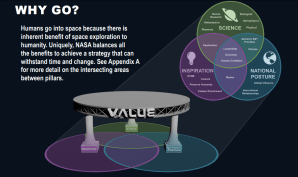
Host: Yeah, definitely. Going to tackle the science goals. I wanted to just zoom in a little bit on this evolving architecture that you talked about from a human lunar return perspective, that’s just the first step, and then it evolves into more complicated areas. You talked about even when we get to the sustained lunar revolution phase, one of the things to consider is now we’re having a wider impact on the surface. And that means not just area, but really the science that’s available and the things that we could do, because the technologies and the capabilities have evolved over time by us continuing these Artemis missions. But what I want to do for this episode is zoom in on that first part for just a second, the human lunar return. So Tamra, I’m going to go to you because Jake presented us with this grand idea of how these things evolve from that first step and get progressively more complicated.
But when Jake and team are coming up with an architecture to say, “Here’s what those first steps look like. Here’s the strategies, here’s the goals.” They go to you and your team, and they say, “Okay, for the human lunar return, here are some things we got to consider.” So, Tamra, really focusing on that first step, the Moon landing mission profile. What are the things that okay, in order to achieve, now that we have the strategy, we have the general idea of that’s our first step in order for us to get to this long-term strategy and goal, how do you take that strategy and implement it and turn it into operations?
Tamra George: The way that we enjoy taking what we lovingly call the architecture from the right and we take that plan, we develop the executing then from the left, and that includes so many stakeholders and expertise through our programs, like our HLS program, with their commercial providers, SpaceX, and now Blue’s on, super excited for their inputs and how they’re designing and how that aids in us working towards implementing these architecture and strategies and objective needs. Then also on our EHP side of the house with the new space suit contracts and our commercial providers there, and how the designs there with Axiom in the first mission on Artemis III, and bringing all those components together and our operations team, right? We talked earlier about the space station, and we have so much experience there with our operations teams there that are transitioning into our Artemis lunar surface program as well, because we need those expertise and stakeholders to all come together. And we perform what we call these exploration mission analysis cycles long term. But basically, it’s this iterative process where we work with all these experts and our commercial providers to understand the capabilities and the designs and iterate on that, on how can we actually implement what we’re being asked to do. As we develop that understanding, that gets handed then over to our operations team to prepare their mission products and to really execute that with our teammates. So we’re more in that mission definition. How do we define the mission with all these great capabilities and expertise across all of our stakeholders and integrate that together to a very successful surface mission.
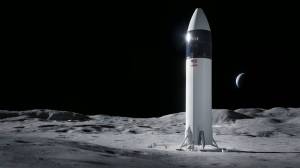
Host: Yeah cause there’s a lot, you mentioned a lot of different pieces, right? I guess that’s part of the complication is you actually have the human lander, but then how does that work with the suit? How does that work with the mission profile and where you’re going to end up having to choose to land? That’s got to be some of the considerations, right? Okay, so all these pieces have to work together, and that sort of informs the decisions you have to make when it comes to not only going trickling down, you said architecting from the right and go moving all the way to the left to that really concrete, “Okay, what do we have and how can we make this work? Right? So that’s sort of what your team is looking at.
Tamra George: Absolutely. And that key is making sure that we’re really integrating with our stakeholders across everybody, including science, as Jake mentioned, because it’s going to take all of us together, right? To make this successful, we are going to need everybody and all those expertise. And it’s really exciting to just see all those conversations coming together to focus on how we’re going to make this happen.
Host: So Tamra, you mentioned science, right? And of course, you mentioned a couple of different elements that I’ll bring this together, but Jake, jumping over back to you again, we can really bring this much broader for a second, cause we are focusing on the human lunar return element of this, but really high level, right? You’re trying to think about not just the science objectives, like right off the bat, but really when we consider Artemis, when we consider Moon to Mars and what is the primary focus, you know, we talked about “why,” maybe this is the “what,” is the science. It’s not just scooping up some dirt. Maybe people think it’s just that. It’s not just testing the different technologies. You guys have really put a lot of thought into the science objectives for the long term.
Jacob Bleacher: Yeah, that’s right. And you know, the first thing to point out about science and the Moon is humankind has forever been aware of the Moon, right? It’s a very prominent celestial feature. We’ve asked questions about it from the first time humans could ask questions. Why is it there? What is it? We’ve progressively learned more about it over time, and it’s a partner. The Earth-Moon system we refer to, it influences things that we feel in our daily life, tides in the oceans, things like that. So it’s a part of us. It’s a part of the Earth-Moon system. And, you know, we have slowly worked our way as humankind towards getting to the Moon.
There are many scientific disciplines that benefit from human presence, even robotic presence at and around the Moon. That’s what we try to capture. And we try to document that as we put together what we call our agency Moon to Mars objectives. But, you know, the Moon is just a great proving ground for us, both in science and in engineering. And it’s bigger than just questions about the Moon itself. There are many questions we have humankind about just, you know, why are we here? Are we alone in this big universe? In some ways, we can’t answer those questions here on Earth. We can’t answer what exactly the environment was like that established a foothold for life because we have things like an atmosphere and plate tectonics that recycle the rocks and erode away the evidence. So we can’t answer the questions here that we’re asking ourselves. The Moon, however, has been here with the Earth from the very beginning.
The very characteristics that make it maybe inhospitable to humans, a lack of atmosphere, no water, the plate tectonics aren’t there. Those are characteristics that preserve the evidence that we would go look for. And so when we go to the Moon, we can collect samples, we can look for evidence that helps us begin to answer those questions they’ve put into context evidence we’ll find elsewhere in the solar system at Mars, the planets that we go to with robots. We kind of talk about it sometimes as the Rosetta Stone of understanding our solar system because it’s kind of this witness plate to all the history. How has the Sun evolved over time? What has the Earth experienced with respect to collisions from other objects out in the solar system? These are all things that we can’t necessarily get to here on Earth.

Then as we go, we can study what is the impact of that space environment on people, you know, what do we need to learn about how humans survive out in space before we decide to make that really long trek to a place like Mars? So the science is really foundational. We want to go learn science, but it’s also important to remember, I like to talk about this as a double-headed arrow. It’s very important to understand that it’s that science we’ve already addressed and learned is what helps us understand how to build these systems. The very things Tamra was talking about. How to deal with the environment, what the environmental characteristics will really be like. That’s what informs us how to build these systems so we can go spend more time out there in space.
Host: Yeah. Even taken from a practical level, you look at some of the NASA payloads that are on some of the first Commercial Lunar Payload Services missions on the Intuitive Machines, Nova-C, on Astrobotic’s Peregrine. A lot of the capabilities, those NASA payloads that those landers are armed with are things that are helping us to understand just those first steps, right? What is the characteristic of the regolith? What is the characteristic of navigation control and actually navigating to a successful precise landing on the Moon? Really just helping us with those first steps so that we can go much wider. Jake, to sort of expand on that for just a second, cause I think it’s been mentioned a couple of times on this podcast, but to really drive it home, I think folks may think of the Moon as just one big rock and, you know, wherever you land, you pick up a rock and that tells you the story. But what I find through multiple conversations is, depending on where you go, there are different secrets to unlock and different stories to tell. So when you talk about an evolving architecture and think about where to go, location really helps to tell a different story on the Moon. And it’s not just as homogenous as maybe people think.
Jacob Bleacher: That’s absolutely correct. So the Earth is not just one big solid rock that is just one rock type. It’s a solar system object that has a history, and it’s a dynamic place. It’s experiencing change today. I think some of those things are lessons we’ve learned over the last, you know, handful of decades as we’ve started to send robotic explorers and even human explorers to the Moon. In fact, you know, if you look at where Apollo landed, those were all landings that occurred on the Earth-facing side, roughly near the equatorial region of the Moon. The challenge we’ve been given now is to go to the South polar region. And so we get this question all the time. Why? Why are you going to that part of the Moon? Well, it’s exactly to the point you just raised.
The lessons we have learned suggest to us that the lighting is a very unique aspect at the poles of the Moon, because the Moon has very small axial tilt only about one to one and a half degrees. And so what we understand about day-night cycles, about lighting here on the Earth, it’s very different than what we see at the poles of the Moon, even the poles here on the Earth, because our axial tilt is significant. We experience at the poles a cycle where we can be in darkness for actually months at a time, and then light for months at a time. We still have this kind of repeated pattern, but at the poles of the Moon, that really low angle tilt means that the Sun just basically stays at the horizon. I like to say if you were standing at the pole and looking at the Sun, it basically is just dancing along the horizon, going in circles around you that makes for really long shadows. We experience basically shadows and patches of light that are transitioning back and forth on timescales that are very different. The ratio of sun to darkness is unique at different locations, and it can change over short distances, even hundreds of meters. It can be very different. You can go from places that are in low topography that in fact never see sunlight, called those permanently shadowed regions, to places that actually might see the Sun on high topography for 80 to 90% of the year. These are some of the details we’re trying to understand a little bit better. But one thing that we think is that places that are decoupled from the sun, they don’t experience sun rays, the Sun’s plasma, they’re not seeing the sunlight. Those are locations where should volatiles have ever gotten onto the lunar surface and entered into those depressions or impact craters that never see Sun. They might actually be preserved there.
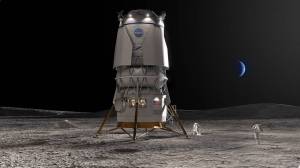
We do have some evidence that shows us that those volatiles are present. And when I say volatile, I mean basically, elements, molecules that if they are easily volatilized, they turn into gas rapidly. If they were to see sunlight, they would do that. Water is a good example. So I talked about how the Moon is sort of a witness plate for the entire history of the solar system. So think about that. You potentially have volatiles that have been delivered to the Moon over the history of the solar system if they got deposited in some of these depressions, if the depressions are old enough, we could have this signature or basically, I almost think about it like a book where we would almost be looking at pages of the history of the solar system by being able to sample there. So the location, as you pointed out, is extremely valuable. This type of samples, this type of history is not preserved where we’ve been in the past. And so that’s why, in fact, we’re targeting the polar regions.
Host: So, Tamra, you hear this from Jake and from others that, “Hey, we want to go to the lunar South Pole. And oh, by the way, you know, there’s these permanently shadowed regions.” The Sun is at a unique angle from the Apollo missions, and you’re thinking about bringing all the different technologies together and thinking, “Oh, man, you know, how is this going to work?” So I want to address really the challenges of that, right? So we’re looking at the lunar South Pole because of the interesting things that Jake just mentioned. So when they come to your team, Tamra, and they say, “Alright, how do we make this work?” When you are thinking about some of those initial challenges, you know, cause from what I know, those permanently shadowed regions are very cold, and the lighting conditions are very interesting. So how do you power a spacecraft, things like that? What are some of those challenges that you’re addressing in order to meet those objectives of landing in such a unique area?
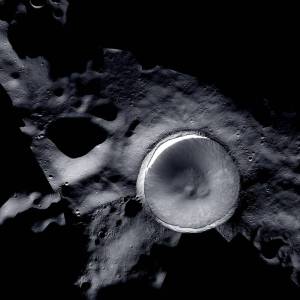
Tamra George: Great question. I think a lot of that is actually built into some of the challenges Jake mentioned that our stakeholders are all looking at. How do we meet those challenges and design around those challenges? So whether it’s the illumination, again, Jake mentioned that winter versus summer and even the long shadows, and how do you make sure that our solar arrays on those vehicles are getting enough sunlight during emission to keep batteries charged during those periods, right? Or even the communication. So whether you’re looking at direct to Earth with our ground antenna assets or potential relays, we want to make sure we have really good communication with our astronauts for many reasons, whether safety, to understand what’s going on, or to help our science team see some eyes on what geology our astronauts are seeing as well. So making sure we have that good communication with the illumination that maintains the vehicle’s capability with power and thermal, right? The illumination challenges are also thermal challenges, as you mentioned. So we’re not going to land in a PSR, or right next to a PSR where we may cause some plume interaction with that PSR because we want that science to be pristine. But it is a challenge to make sure that we can find a nice, you know, within slope constraints, within crater constraints, within blocks constraints. We like to call them boulders, but in geology on the lunar surface, they’re called blocks. Make sure things are hazard-free enough for that safe landing with our astronauts, but within that walking or roving distance to a good PSR to be able to get that good science and learn, as Jake was mentioning. So we know our provider friends, SpaceX, and Blue Origin, they’re actively trying to understand these challenges as well and how can they best meet where we’re trying to go. So it’s been exciting trying to bring everybody together to talk through that and how to get there.
Host: Yeah. And I think at least in the near term for some of those first missions, right? You think about not just the landing aspect, the landing aspect certainly has those challenges. You mentioned, you know, getting close to the science, but really thinking about the safety aspect, I think is huge. But in order to get there, I believe, you know, we have to go into a near-rectilinear halo orbit, and in order to access some of those regions on the South Pole, which means that when it comes to landing on the Moon, in order to launch and rendezvous with the Orion spacecraft that will ultimately take them home, they’re on the surface for six days at least in some of the earlier missions. And so when you think about surface operations, and okay, once you actually successfully land on that boulder-free, non-slope, close-to-science kind of landing site, how would we expect them to spend—them meaning the astronauts that ultimately land on the surface—how would we expect them to spend their six days? What do we care about that we want them to spend their time on for six days?
Tamra George: Well, on the first mission, of course, it’s going to be the first time we’re demonstrating a crude vehicle landing, right, with our astronauts. And the first time we’re demonstrating a new spacesuit on the lunar surface. So some of the focus will be to checking those systems out making sure we’re meeting any demonstration objectives. But then we’re going to quickly shift into the main focus and how we support science activities. So there is a call out, well actually not out, it’s been completed, but for selecting science payloads to be deployed on some of our spacewalks on the first mission. So the announcement of which payloads we’re going to get to utilize and deploy have not been announced yet, but all those proposals have been in and going through review. And so we’re anxious to see which ones get selected so we can integrate into that plan. But deploying some good external science payloads and taking samples, like you were talking about with Jake, in the area that we land, where can we work with our science team to make sure that we’re getting the good samples that meet some of our strategic objectives. There’s going to be tons of observations, right? And it’s not going to be just outside the vehicle, but inside the vehicle going on to Mars, we really need to also learn how the human body reacts to a lot of it. So we talk about the engineering and design technical challenges, but there’s a lot we need to learn about the human body as we want to continue on to Mars. And so there’ll be some human body aspects of things that we’re going to be looking at from the science perspective as well and observations out the window and things, too. So really just checking those boxes of yep, everything that we looked at and the strategic architecture and the mission definition to operations and where we pick to land and how our vehicle performs and how our suit performs and meeting these science objectives. We’re just going to march on down through that list and try to check those boxes off for a successful mission.
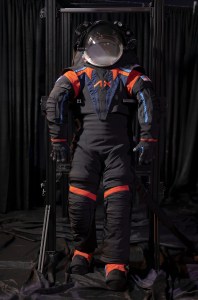
Host: Well, I don’t think we have to worry about them being bored while they’re on the lunar surface. Sounds like they’re going to have quite a bit to do. It’s kind of refreshing to hear that on that first mission, of course, you need to check out the systems. This is the first time where you have these particular suits on the surface, this particular lander on the surface. So let’s just make sure everything works, let’s just check those boxes. But very refreshing to hear that because, you know, we have so many days on the lunar surface, we can switch gears towards the end and really start dedicating to science, deploying science payloads, maximizing our time to really utilizing every minute, every moment that we have on the lunar surface.
It’s not just the touch and of an operational checkout. We can really accomplish some fascinating stuff. I wonder though, if you were to zoom in on maybe a day, right, on the lunar surface for at least that first mission, maybe towards the middle, maybe after some of those operational checkouts, I’m assuming we can predict some a spacewalk, we can expect them to have a couple of meals. We can expect them to maybe talk with us from the lunar surface and check in and folks get to actually tune in and see their faces while they’re there. It’s going to be a busy day, but, you know, just a little snapshot of what is it that maybe we can expect in these early phases of planning?
Tamra George: I think you said it exactly right, that entire list is actually things that are talked about almost weekly. And how do we balance all of the great things that they can do? Which includes being able to talk to the public, right? Because we want to take everybody with us. So, yes towards the middle of those six days, there’ll be spacewalks, there’ll be science, there’ll be health things that our crew needs to do. And again, some of those medical things, but also wanting to really make sure we find that time for the crew to be able to talk to the public cause we want to go together, we want everybody to go with us.
Host: Yeah. And of course, you mentioned so many stakeholders, right? Of course, the medical community is going to want to get that data. The science community is going to want to get the lunar surface data. Operations community wants to check out their systems. Me being selfish, public affairs officer, wanting to understand, hey, we’re going to get to talk to them, right? So everybody’s going to want to get a piece of this, and it really just shows we’re really trying to maximize their time. You know, when, when it comes to surface operations, just high level, when you think about the challenges between maybe some of the Apollo mission Moonwalks and the Artemis mission Moonwalks near the lunar surface, I’m assuming there’s a lot of similarities, but key differences when it comes to doing a spacewalk on the lunar surface near the South Pole. What are some of those challenges and considerations we need to think about when we’re thinking about those kinds of operations? The length of the spacewalks and even lighting conditions, things like that, communications you mentioned. What are some of those key things we need to be aware of when planning for Artemis spacewalks?
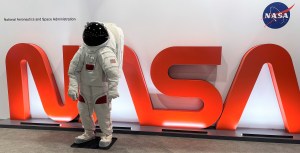
Tamra George: The biggest challenge I think we’re seeing, compared to Apollo, is probably more in the illumination. We did have an Apollo mission that was representative of a little bit of what we’re going to see with that illumination low on the horizon. And so we’re actively performing a lot of assessments. Our operations team, you know, with our EVA human mobility program, along with us and our science stakeholders and such, try to look at how can we test that differently and how can we mitigate that low on the horizon, in their face, be able to walk and through shadows and other things, and optically their eyes adjusting to all that, right? Make sure they’re able to stay cognizant and aware of where they’re at and getting to those science objectives. So that’s probably one of the challenges being worked a lot. I mentioned that lunar regolith, the dust, and making sure how do we appropriately dust those suits off before going into the cabin. That’s not a challenge. That’s above what Apollo saw. I think it’s more what we learned from Apollo, how much was brought in the vehicle that we’re trying to minimize that a little bit more this round. Otherwise, I think the challenge is we can really stand on everything that our Apollo teammates have learned and grow from that. And that will, I believe, enable all those future sustained, right? We’re one step at a time get to those additional longer term architecture goals.
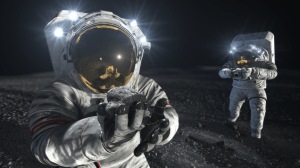
Host: Excellent. Yeah, so I mean, these are really just some of the first steps in those challenges, right? The sun, right in your eyes, you know, thinking through that and what that’s going to look like and working on some of those challenges. And I know there’s even some training now and capabilities here at the Johnson Space Center that are looking at exactly that. I got to go to one of the buildings here, and they have this wonderful simulation, these screens that give us a sense, it’s almost a VR sort of world that you can immerse yourself in and really get a sense of what that’s like. And it is eye-opening. Just having those training capabilities so you can identify it and think, “Okay, how do we address this?” is going to be absolutely fascinating.
Host: Jake, I want to go to you just to sort of wrap us up here and thinking about just these first missions, but really thinking forward, ahead to what we can expect with some of these first missions and some of those things that Tamra was mentioning about finding that Goldilocks zone and a nice spot that’s close to the science, but still operational, considerate. But thinking about when we were addressing the architecture up front, going to foundational exploration, going to sustained lunar evolution and taking those steps to maximize our footprint on the lunar surface, how is it important to just make these first steps and continue to build and really stressing the importance of why lunar surface exploration is so important?
Jacob Bleacher: Yeah, that’s the critical aspect to this flexible architecture that we’re working. The types of objectives that we’re identifying, you know, they’re broad, they’re broad reaching objectives, and so they’re not the kind of thing you just go and you do the whole objective in one mission. So we have to have an iterative build, and that means iterative learning about that environment so that we can operate and it means iterative, gaining more capabilities. So the capabilities we’ll need, you know, Tamra mentioned earlier about, well, these permanently shadowed regions, they’re probably very difficult to operate in. We’re certainly not going to go land there on the first landing. We might try to land close by and maybe dip our toe into the edge of one of these things. But that’s part of that learning process. So having these segments outlined early for us is helpful there.You might not fully address an objective. You might not ever fully address an objective, but you can begin to build in new answers and ask better questions about that objective by learning and developing new capabilities.
These first few missions will teach us so much about what it means to operate. What is it really like to have the Sun right on the horizon with no atmosphere shielding you from it. What will it be like for us to try and move around on that surface? How will we see the surface and interact with it? Will we be able to identify types of features we thought we could to help us decide what we want to sample? These are all operational questions that we’ll ask that underpin our ability to go do the science that we want to do. But as we move forward, we may learn, “Oh, well, if we had only had this capability with us, we would’ve been able to do so much better.” That’s part of that iterative build, that iterative learning process. And as we progress through our segments, we’ll learn how to get those capabilities in place. And this is where the tremendous opportunity for partnership comes into play. NASA can’t do this alone, and that’s why we’re so interested in talking to our international partners and working with our commercial friends to figure out new and innovative ways to tackle some of these difficulties. And there may be more than one way to tackle some of these. And so learning about that environment, gaining experience, mission after mission, learning what we need to put in place next so that we can go do it, that’s really what this evolvable and flexible architecture is all about.
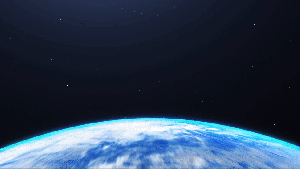
Host: Very, very important, guys. This was such a fascinating conversation and I’m ashamed that I have to let you go because I feel like I could just keep you here for another three hours and we can just go through, just step by step all the different considerations you guys, cause I’m pretty sure you’re deep into it. But just to be able to steal your time for just a little bit and get a taste of some of those first steps and why we’re taking them so we can make those next steps and get us to learn even more next time and expand our presence, the importance of the science that we’re doing for lunar exploration is just absolutely fascinating. So Jake and Tamra, thank you so much for coming on Houston We Have a Podcast today, was an absolute pleasure to have both of you on. Thanks for all you do. This is some incredible and amazing stuff you guys are working on. Really just thinking about lunar presence and evolving lunar presence on the lunar surface from a global perspective. You talk about international partners, it’s not just us going, we’re all going together. And so to bring the community together to achieve such wonderful goals is absolutely fascinating. Jake and Tamra, thank you so much for coming on the podcast.
Jacob Bleacher: Yeah, thanks for having us, Gary. And thank you for helping us tell the story. If you didn’t notice, we love talking about this cause it’s exciting and happy to come back anytime.
Host: Excellent.
Tamra George: Yes. Thank you so much.
Host: You guys were awesome. Take care.
[Music]
Host: Hey, thanks for sticking around. I definitely ended that conversation supercharged about all of the things that we’re going to be planning for Artemis missions and beyond. And I hope you definitely realize the same. It was an absolute pleasure to have Jake and Tamra both on to talk about that, nasa.gov is the place to go for anything that you are curious about in terms of Artemis. And of course, there’s a whole Artemis landing page where you can check out and dive way deeper into Artemis missions and beyond. If you want to check out more of the NASA podcasts we have across the agency, we have got a link for that too, nasa.gov/podcasts. That’s where you can find us, our show, and listen to any of our episodes really in no particular order. If you want to talk to us, we’re on the NASA Johnson Space Center pages of Facebook, X, and Instagram, and you can use the #AskNASA on your favorite platform to submit an idea for the show, just make sure to mention is for us at Houston We Have a Podcast. This episode was recorded on December 7, 2023. Thanks to Will Flato, Dane Turner, Abby Graf, Jaden Jennings, and Vanessa Lloyd. And of course, thanks again to Jake Bleacher and Tamra George for taking the time to come on the show. Give us a rating and feedback on whatever platform you’re listening to us on, and tell us what you think of our podcast. We’ll be back next week.


























